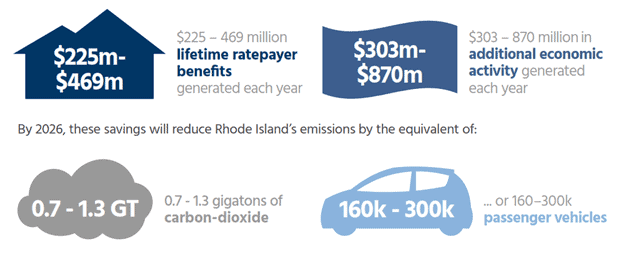Dunsky recently completed a comprehensive Market Potential Study for a wide array of demand-side energy resources (DERs) in Rhode Island. Commissioned by the State of Rhode Island Energy Efficiency & Resource Management Council, the study offers a uniquely comprehensive and integrated analysis of the potential of five DERs:
- Energy efficiency (EE),
- Electric demand response (DR),
- Combined heat and power (CHP),
- Heating electrification (HE), and
- Customer-sited rooftop solar (PV).
Unlike other Market Potential Studies that look at each DER opportunity individually, our analysis accounted for how each DER interacts with and impacts the other, providing a far more accurate picture of their combined potential for the state. By looking at demand-side energy resources holistically, we were able to collect more complete data, providing clearer and more robust insights for our client and enabling more effective policy decisions for the lasting benefit of their constituents.
The integrated DER potential study finds grid-level savings that, by 2026, could result in significant ratepayer, economic, and environmental benefits, as seen in the graphic below.

Interestingly, this MPS is one of the first in North America to look at energy efficiency potential savings in a context where lighting savings are scarce, and can therefore serve as a roadmap for utilities, regulators and others when considering how to achieve continued savings opportunities to meet their policy or regulatory goals.
The MPS will be used as a key input in the process of setting the next phase of performance targets for programs overseen by the Rhode Island Energy Efficiency and Resource Management Council (EERMC).
Dunsky’s study was supported by our proprietary Demand and Energy Efficiency Potential (DEEPTM) model, a transparent, sophisticated yet user-friendly tool that allows clients to assess energy savings opportunities across all sectors, segments and DER options.


